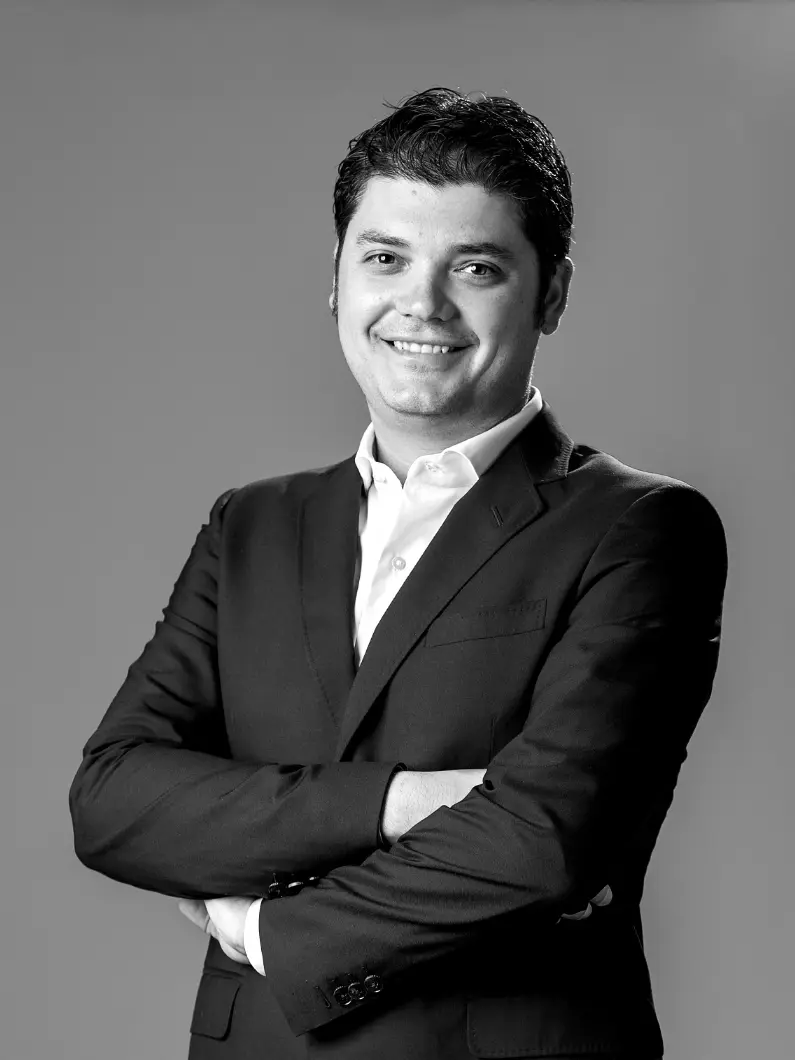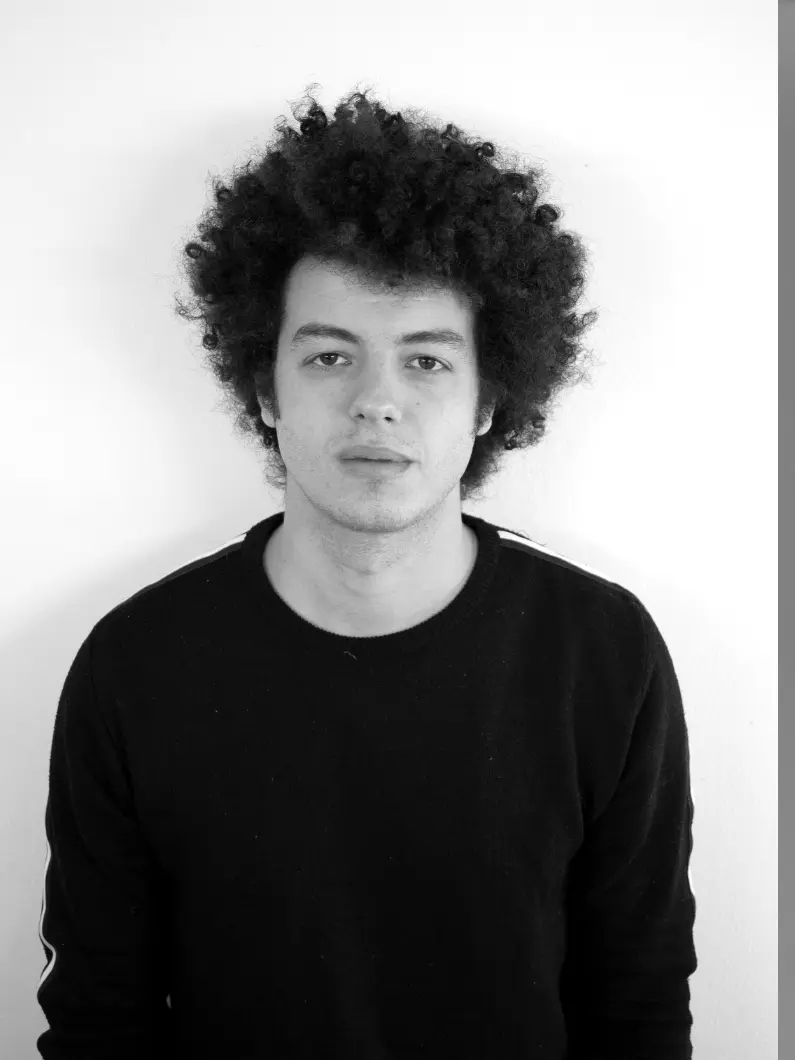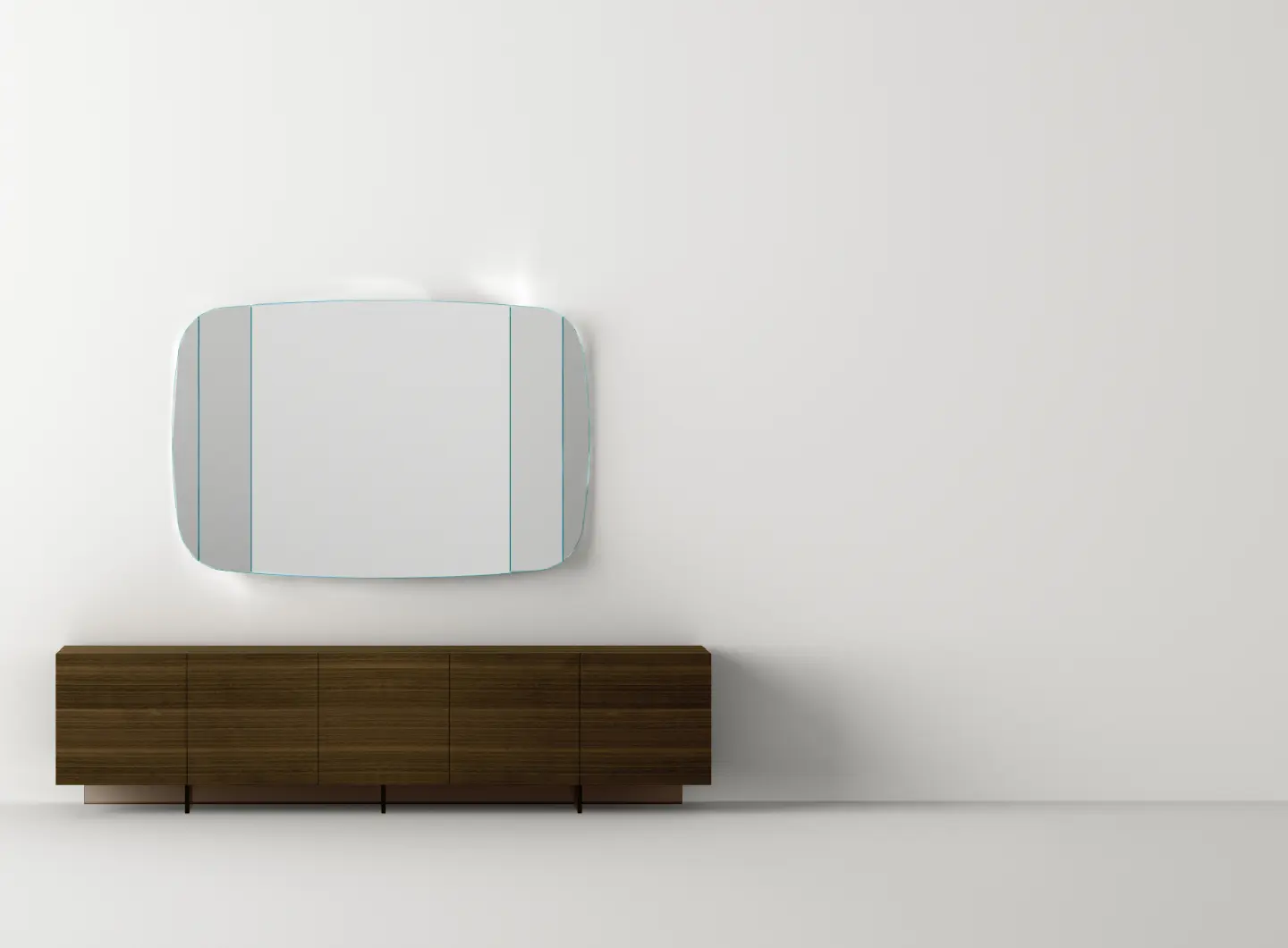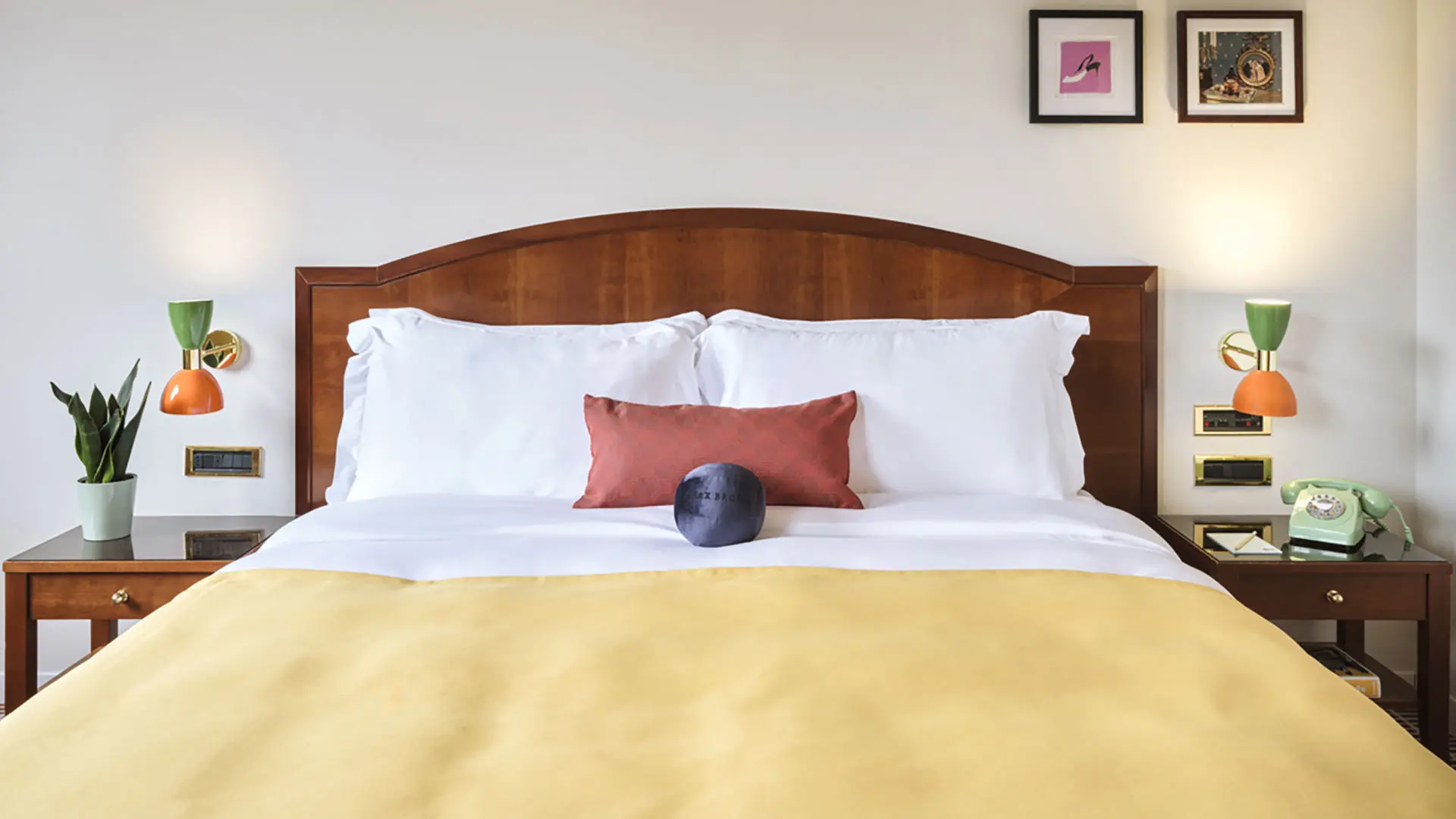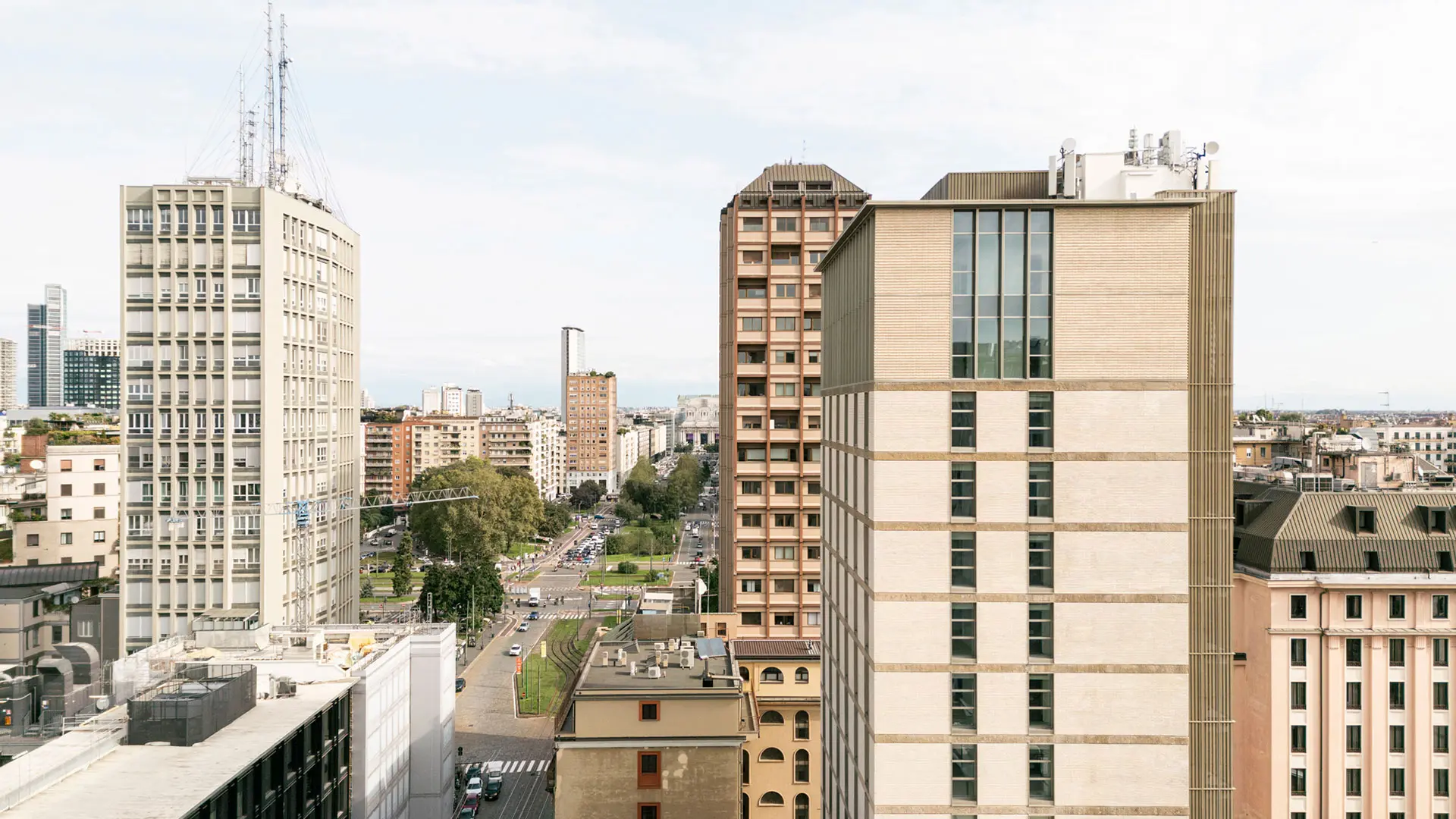In partnership with MiCodmc, a selection of establishments ripe for discovery during the 63rd edition of the Salone del Mobile.Milano, from 8th to 13th April
Francesco Forcellini and Tonelli design: the endless interplay of mirrors
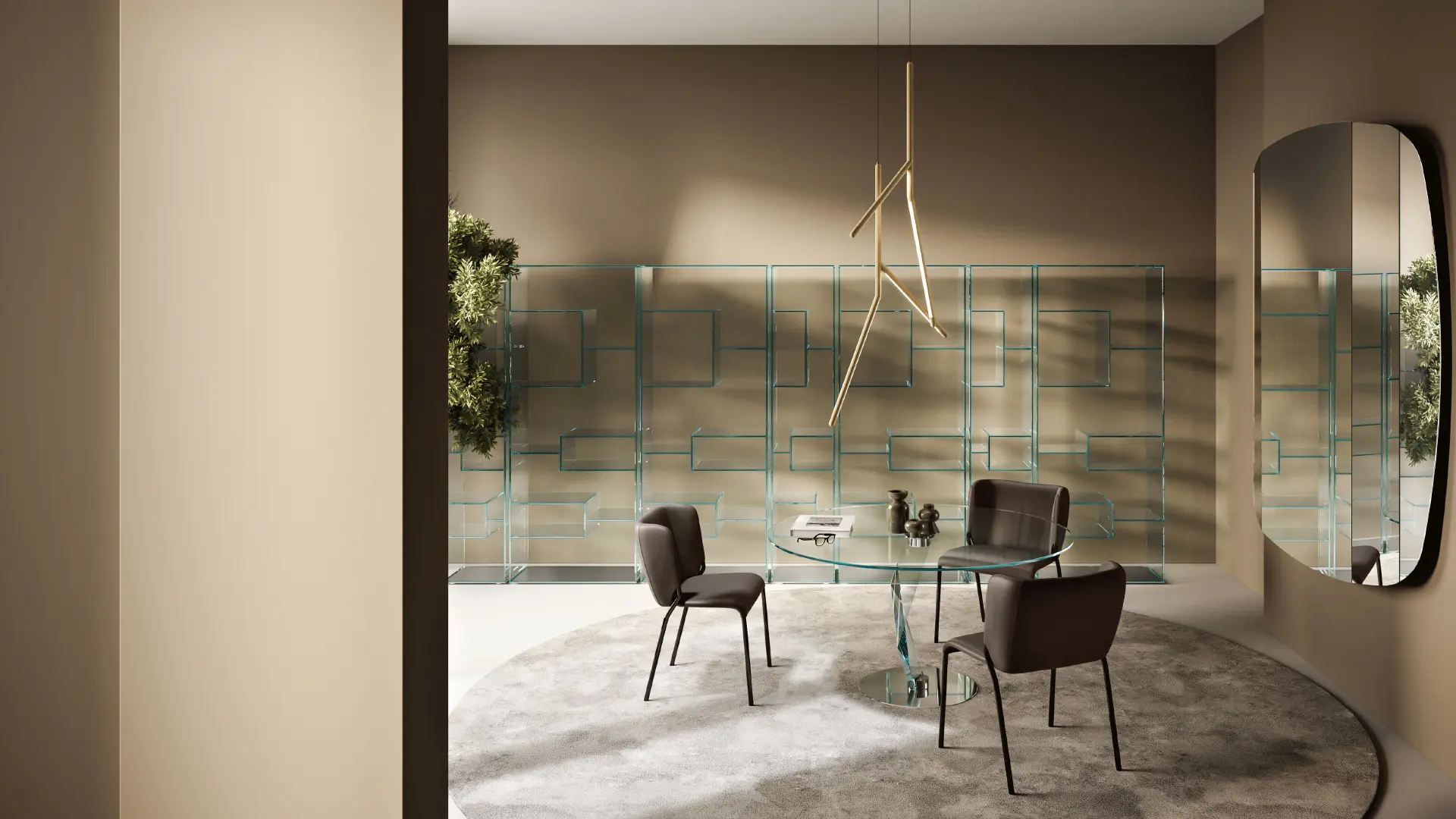
Beryl, Tonelli design, design Francesco Forcellini
Finding new formal expressions. This is the research of the young designer who encountered an iconic brand in the production of glass furnishings and accessories. The outcome? A third sculptural piece
Scouting continues among the new collaborations identified at the edition of the Salone del Mobile.Milano 2023. An object with its roots in the distant past. But that still fascinates in replicating and highlighting reality. Functional, but also highly decorative. It is the mirror, or rather the three mirrors, that the thirty-five-year-old Francesco Forcellini designed for Tonelli design, the Pesaro-based company founded in 1988 as a manufacturer of glass furnishings and accessories and established on the international market through innovative techniques and processes in glassmaking.
After Central and Whirl, comes Beryl, presented at the Salone del Mobile.Milano 2023. The name of the (future) collection of mirrors derives from the precious stone of that name, whose multifaceted structure recalls the typical facets and step cuts of emeralds and other precious stones in the beryl group. Available in 3 colors – clear, fum{ and bronze – and in 5 different sizes, Beryl is an outsize gem and the first sculptural piece in a large family of mirrors. Inclined planes and curved lines, in an interplay of superimpositions, together with the mirroring on the side frames, create an essential and sophisticated object, notable for its markedly visual sign. We asked Francesco Forcellini and Michele Gasperini, head of Tonelli design, three quick questions
Michele Gasperini: A fair part of Tonelli design’s success, I feel, has to be attributed to its origin. This was in the late 80s, in a particularly favorable economic period, in the Pesaro area where industry was developing strongly... And, of course, it was also thanks to the people, architects and entrepreneurs, driven by passion and determination, with the desire to demonstrate how creativity and craftsmanship could be successful on the international market. After the first designers who gave rise to Tonelli, such as Isao Hosoe, De Pas, D’Urbino, Lomazzi, Marco Gaudenzi and Luigi Serafini, many other designers wanted to work with our glass bonding technology. Karim Rashid, Denis Santachiara and the Adriano brothers made their contribution to our growth, continuously fueling the passion that still guides us today. In recent years, even young and very young designers, more or less established on the international design scene, have worked with us, and the greatest satisfaction is to find new languages and interpretations of glass with them, making it always relevant and surprising.
MG: Glass is redeeming itself, after a few years of apathy on the part of consumers, both in the furniture sector and in that of household products in general. The pandemic has certainly fueled in all of us a strong ecological sensitivity towards the environment and respect for our health. In this context, the best natural material, which embodies important characteristics of recyclability and healthiness, is definitely glass! Even compared to the new specialized materials, with nanotechnological treatments and coatings, glass is the supreme material, capable of ensuring an ecological footprint that amounts to zero! In the field of foodstuffs, it is already the absolute best material for storing drinks and food. In the architectural sector it is already one of the most widely used materials in modern construction, increasingly used in the photovoltaic sector, today making it possible to produce windows, tiles and roofs capable of generating electricity from the sun. As far as Tonelli is concerned, meaning the residential sector, the choice of glass furniture is guided today also by the aspect of the healthiness of the space in which we live and spend most of our time. A glass product, which has no formaldehyde emissions and can be easily cleaned and sterilized, ensures a pure and healthy environment.
MG: More than a style, TNM is a path, strongly willed by the company that, under the guidance of the architect Massimo Castagna, is guiding our brand to cope with a steadily evolving market. Glass is the basic element, which paired and combined with equally noble materials, enables us to create unique and timeless furnishings, qualities that have always distinguished Tonelli’s design output. Products designed to accompany those who choose them for a long time. Customizable, to satisfy everyone’s tastes and desires. Safe and ecological to safeguard our health as well as the environment. All these are values that we consider essential for an authentic and responsible “Made in Italy”.
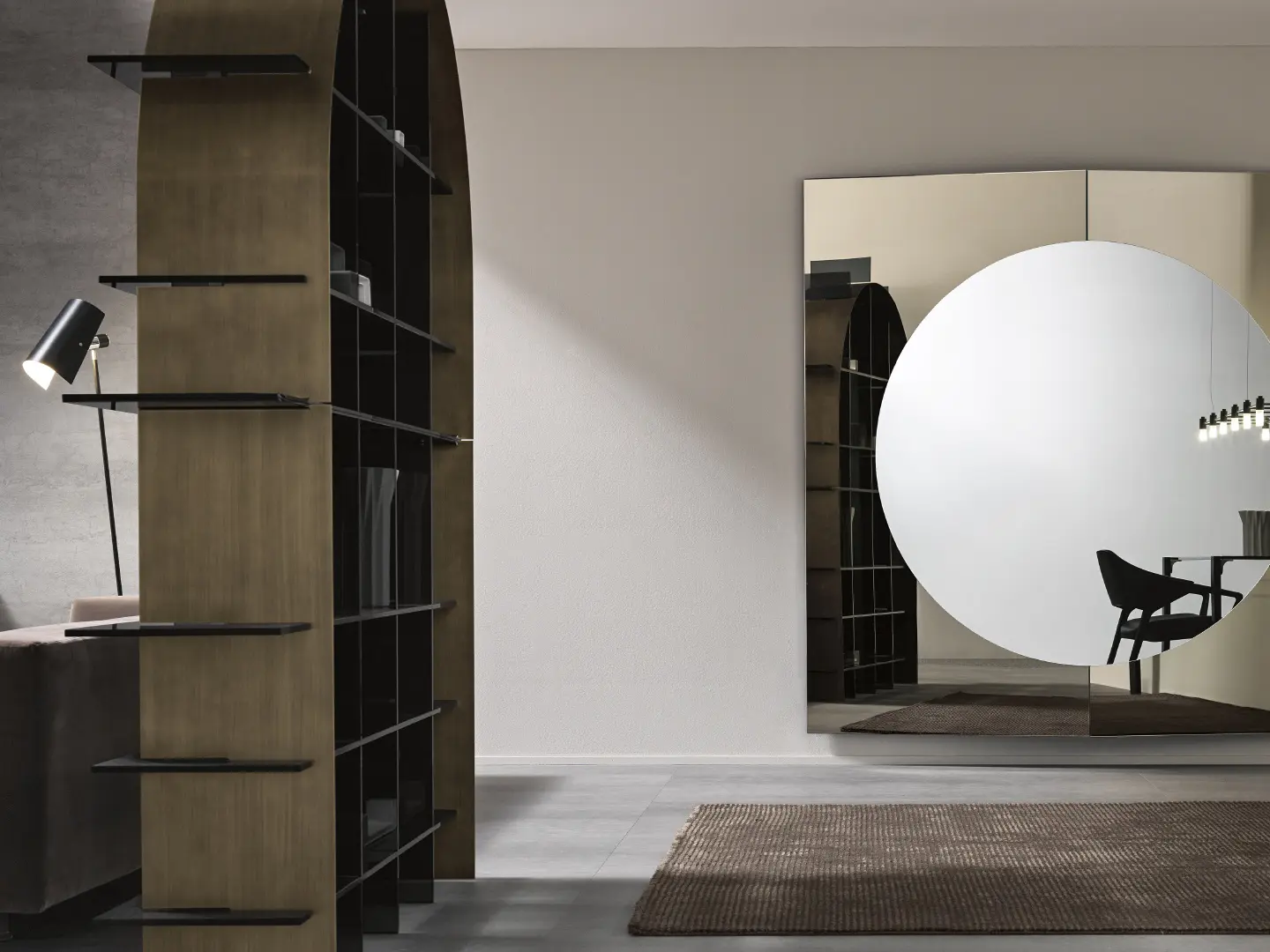
Central, Tonelli design, design Francesco Forcellini
Francesco Forcellini: These are large mirrors designed for living areas and important spaces. This typology characterizes the spaces deeply. They are frameless mirrors, fully reflecting, but made up of different inclined planes that mirror the space around them in different ways. Each of the three mirrors interprets this concept differently, but they are all part of a common strand of research, which has developed from year to year. I think of these objects as furnishing sculptures. They enrich the space as a painting could, but with the reflections in their inclined planes they provide us with different viewpoints. Central, the first, is based on a central reflection parallel to the viewer, and the two inclined panels at the sides create an effect of suspension of the central part. Whirl, through the angle of the four external mirrors, creates an interplay of perspective that makes the image on the central mirror dynamic and energetic. In Beryl, on the other hand, the lateral inclined planes create an interplay of staggered perspectives that follow one another and at the same time convey a feeling of solidity and three-dimensionality in the product. Their commonality is the multiplicity of points of view, obtainable with the inclined plane mirror. I think that being able to continue working on a theme is an important practice to conduct specific research over time, in this case research into spatial and conceptual themes, as well as purely formal typology and material.
FF: I like to learn new things, things I can then apply to what I do. Technologies are malleable, they can evolve or take new directions, even with small tricks. When I go to an industrial district I always feel a certain excitement when I see the factory sheds, thinking that everything artificial around me - materials and products - has been created by people thanks to machinery or tools. This opens up endless possibilities, because in addition to the specific knowledge of the various technologies, there are variables related to the working method, how a machine could be used differently, or how a technique can be altered to achieve a given result. Then the immaterial part is also of fundamental importance. Our historical phase is very much bound up with digital technologies, both related to the control of machine tools and assisting in the creation of product forms with modeling programs or programming languages, all the way to the most recent frontiers of artificial intelligence and product virtualization. However, this is also accompanied by a rediscovery of the value of the materiality of products, their uniqueness and tangibility. I think innovation is moving towards a very humanized, very concrete technology. I believe that the digitization and virtualization of things that began with web 3.0 is not moving us away from the material world. On the contrary, it’s creating a new level of interpretation of reality, which gives a value to physical reality, enriches it and helps us generate it and understand it. I’m fascinated by these interactions, often not visible, of material reality with digital reality.
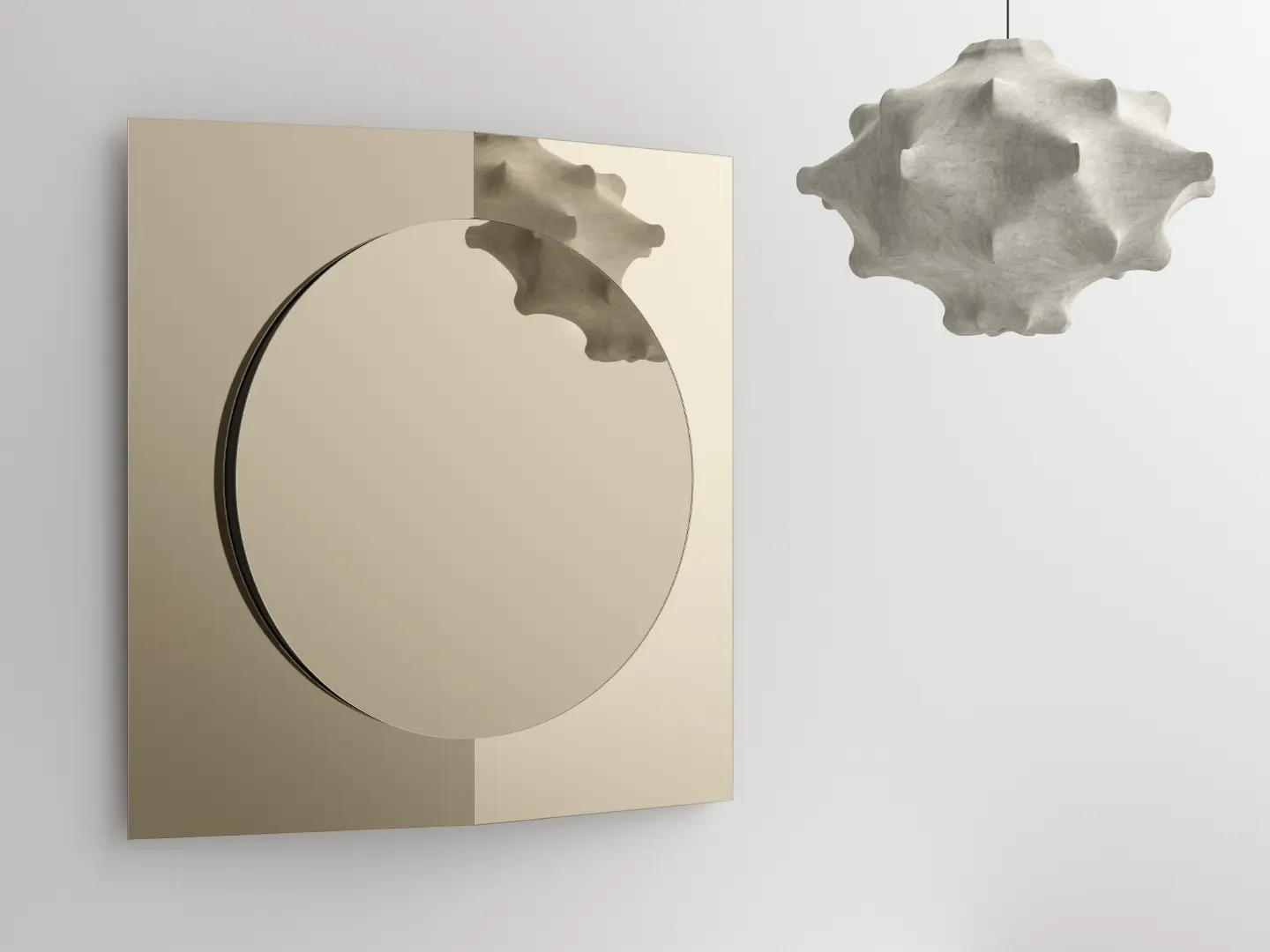
Central, Tonelli design, design Francesco Forcellini
FF: The physical properties of products are closely bound up with conceptual ones. As a person, I’m very clear and frank. I also want this to be seen in my products. I always try to make sure that they communicate what they need to communicate without requiring further explanation. I think an object is much more powerful if it can communicate without having to use any words to describe it. This leverages the culture of those who interact with the object: I strive as far as possible to draw in a clearly and understandably. Obviously you can’t always convey everything that an object seeks to represent immediately, but I think that at least a first part of the concept has to communicate straight away, then a second part can be discovered through a rereading or explanation. This means the physical appearance of the product is essential to convey the concept in the clearest and most coherent way. The conceptual part of a product is very important because it conveys meanings. The value of design objects is not so much bound up with their function as their meaning and the emotional reaction it provokes in us. I always try, with the utmost honesty, to embody the meanings that strike me as the best possible in my products.
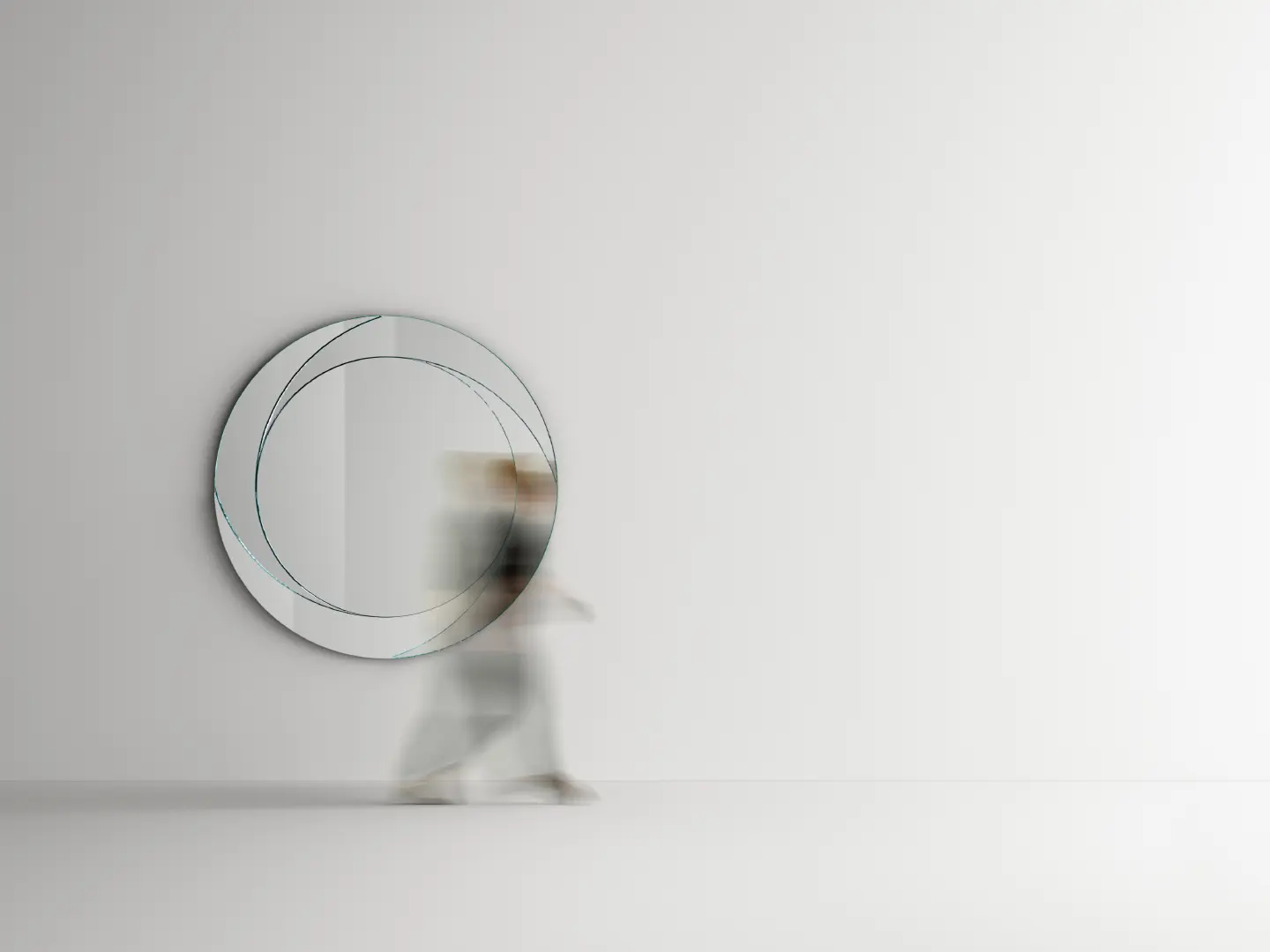
Whirl, Tonelli design, design Francesco Forcellini
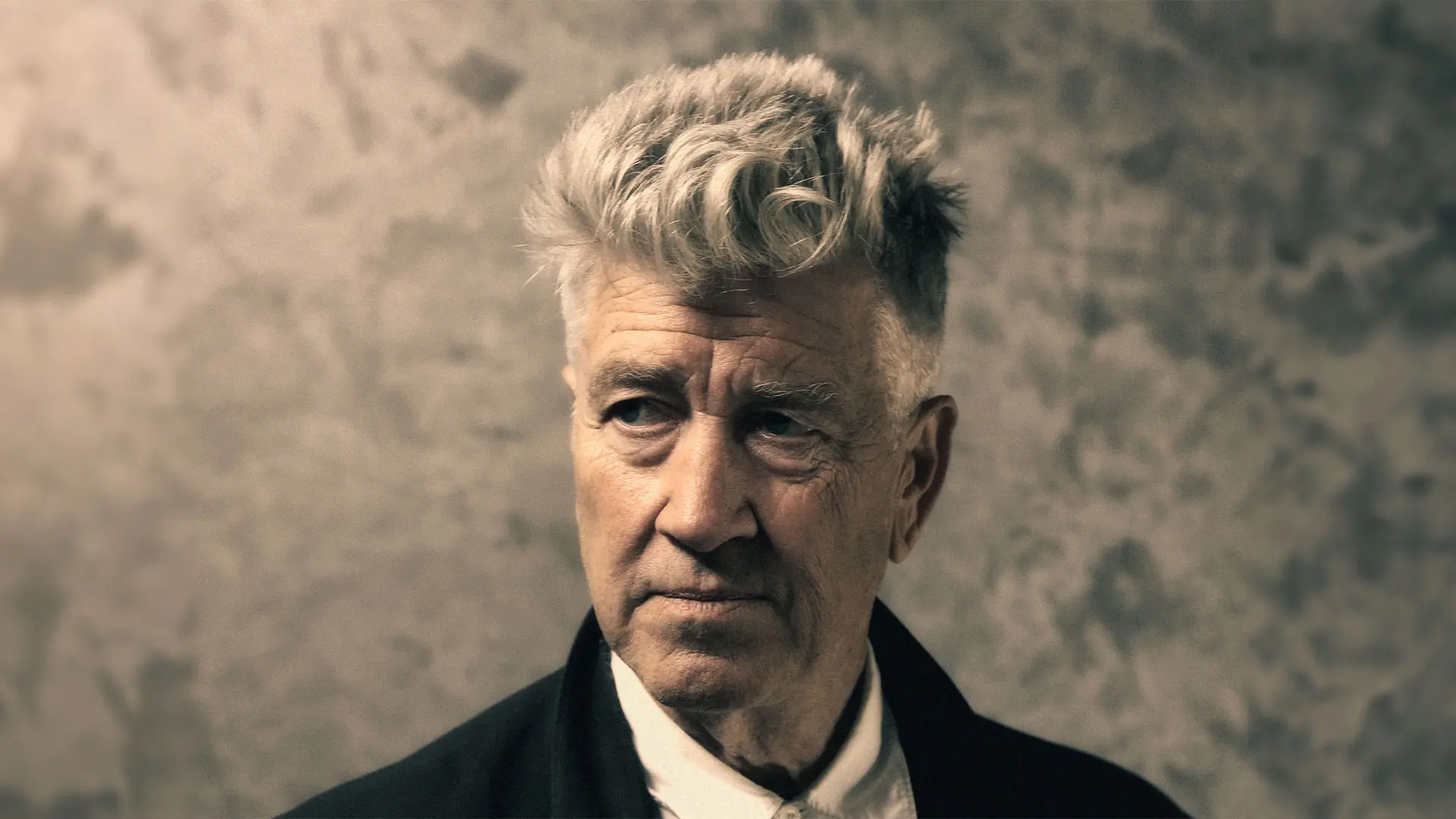
In memoriam: David Lynch
The American director has left us at the age of 78. The Salone del Mobile.Milano had the honor of working with him during its 62nd edition, hosting his immersive installation titled “A Thinking Room”. An extraordinary journey into the depths of the mind and feelings. His vision will continue to be a source of inspiration.



 Stories
Stories
